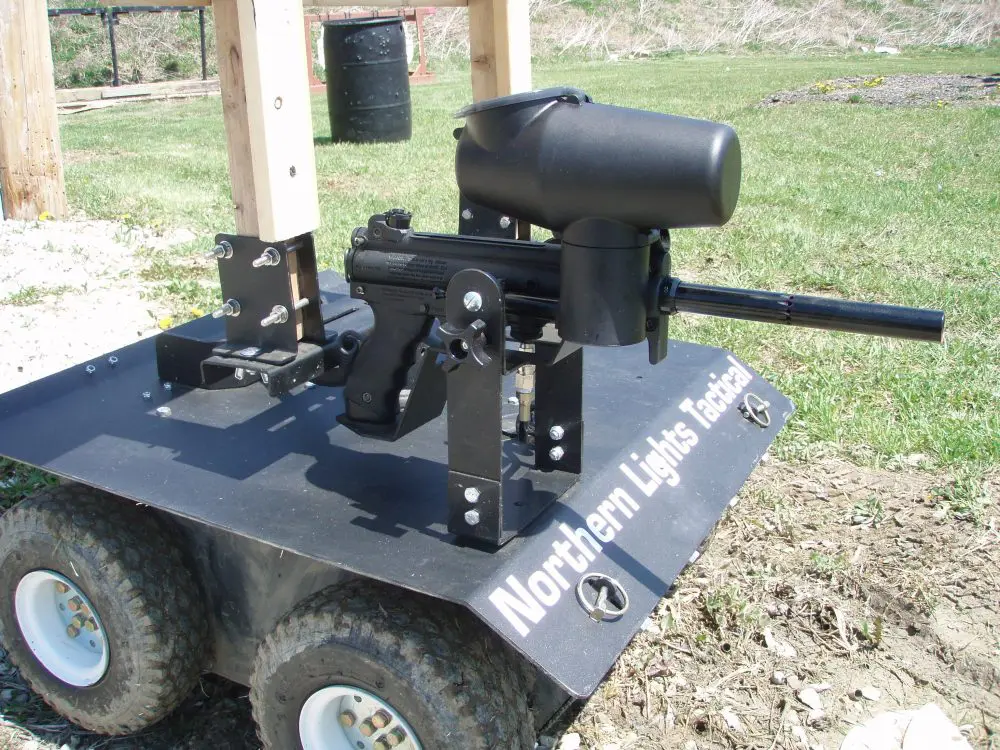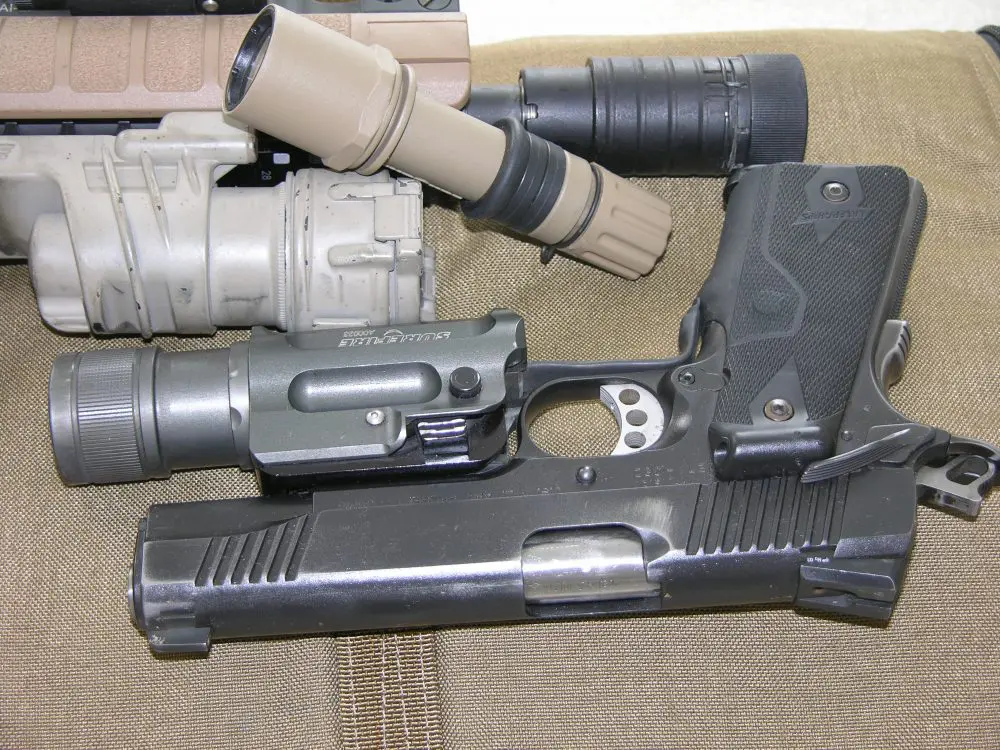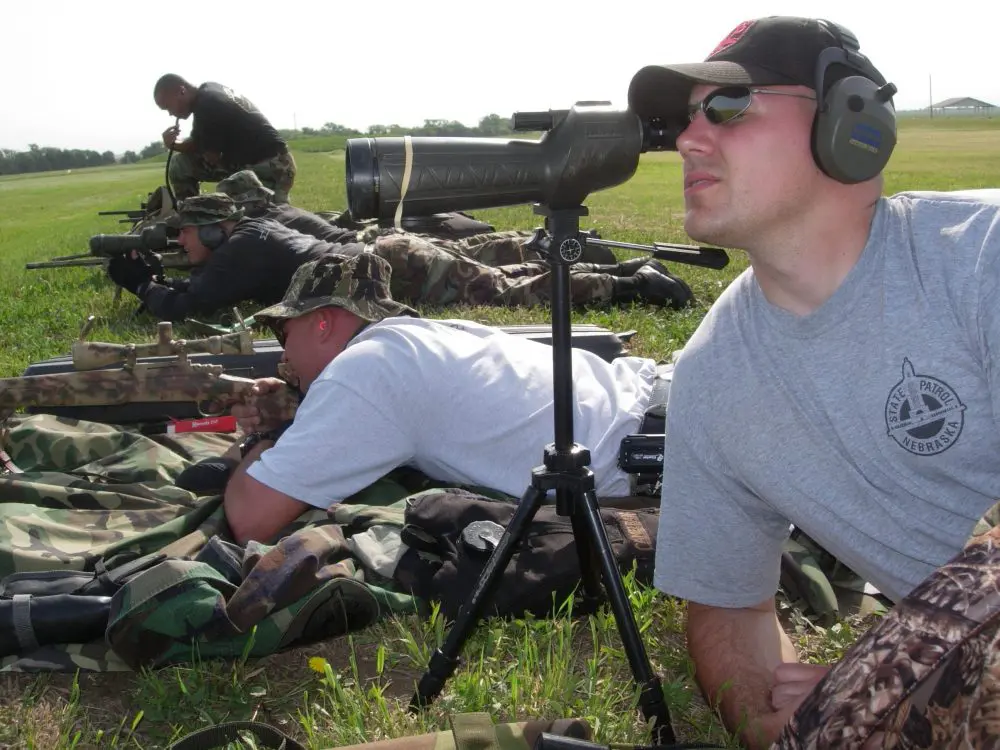Many predators go for the throat.
Usually deploying their fangs, damaging or destroying an animal’s throat rewards the attacker with steadily increasing incapacitation—sometimes rapid, sometimes not—until the prey is out of the fight.
Since the gunslinger’s bullets are his fangs, why doesn’t this breed of cat opt for the throat as an optional target to the torso, pelvis or head of a human assailant?
Probably for three reasons:
(1) Very few gun-toters study anatomy during their training.
(2) We are so programmed with the concept of chest and head shots that we don’t practice anything else.
(3) We don’t think “outside the box,” and consequently often don’t see the forest because we’re looking at the trees.
There are several temporal stages of a ballistic confrontation. It may be a down-and-dirty dogfight, in which case you’re launching lead at the largest accessible piece of meat and bone you can hit.
Alternatively, there’s the occasion when you have the luxury of time to place one or more carefully measured rounds into a select precise area.
And then there’s a third time-lapse occasion, which is a momentary time frame somewhere between the lead-slinging party and the time-consuming precision shot. This is when you can pick and place the proverbial “quick, accurate shot.”
As noted above, not many shooters study layman’s anatomy regarding torso length, forearm length and size and geometric shape of human targets. Yet this information is as important as a working knowledge of trigonometry is for a long-distance rifleman. Yes, everybody knows that we shoot for the upper torso because of the location of the so-called vital organs. Unfortunately, that’s not entirely correct—on two counts.
First, Mister Badbuttocks may not get the message that he’s supposed to shut down just because you shoveled your Magic Bullet through his heart—and immediate incapacitation is the name of the game. Second, the primary reason for aiming for the chest on a front-facing human is because it’s the largest body area when you have time constraints to hit something potentially more effective—or because you’re running a thousand-yard kill shot with a large-caliber rifle.
The bad news is that the effective chest area shrinks down to about four inches in a quarter of a second on a fast-rotating torso, such as on a machete-swinging maniac carving on a third party whom you’re trying to protect. The moral of the story is, never assume target availability—or the lack thereof—in advance. Saying that a gut shot is usually ineffective is often true when taken from the front—but if that’s all you have available, send lead downrange.
As an aside—no pun intended—a laterally centrally placed gut shot is one of the boss shots of them all. It blows up “hard” organs like spleens, livers and kidneys—devastating impacts.
Well, you say, the “answer” is an Automatic Failure Drill (a couple of trigger presses to the chest immediately followed by a coup de grace to the head). And it may be. The caveat to this is that it’s easy to execute on a traditional static, one-dimensional IPSC target on a training range. In fact, once you cotton on to the fact that the head on a vertical human is 14 inches above his chest, you can literally do this with your eyes shut—once you’re accustomed to how much you need to elevate the weapon at X given distance after the torso rounds have been delivered.
What it boils down to is target availability at a given time. It may be pelvic area, it may be torso, it may be head. This is not the time to surmise what “should” work—ballistically or anatomically. It’s a matter of delivering projectiles to what’s available until the threat stops.
So it’s full circle back to the whys and wherefores of the neck and throat as a viable target.
First, it’s relatively easy to hit. Almost five inches in width and almost as tall in length, it doesn’t change size or shape with movement. It has very little protection from bullets, whether you impact the carotid, jugular, windpipe, or central nervous system, and is only two .45-caliber bullet diameters narrower than a well-protected and erratically oscillating cranial cavity.
If you err high or low in accuracy, you still get a reasonable hit. As long as you don’t miss left or right, you’ll gain something. And even though a jugular or carotid hit probably won’t cause instantaneous incapacitation, your enemy is in a lot of trouble—and you have more ammo for follow-up shots if needed.
You never know what will be available to your gun muzzle at any given time until that body part presents itself in a rolling gun battle—so don’t train exclusively on head, torso and pelvic areas.
The neck is the primary power connection between your assailant’s brain and the lower limbs, which can hurt you—especially with blade and bullets. Destroy this connecting rod and you could be in business.
If you want guarantees, check under the death and taxes column. Anything else is a coin toss—especially in a gun battle. But if he can’t breathe, is losing massive amounts of blood, or has his central nervous system disconnected, he’s in deep doo-doo. Maybe not out of the fight, but getting there fast.
What’s good enough for the king of the jungle is good enough for me.
Go for the throat…
Louis Awerbuck is Director of the internationally acclaimed Yavapai Firearms Academy. Course information and schedules are available at their website at www.yfainc.com.




